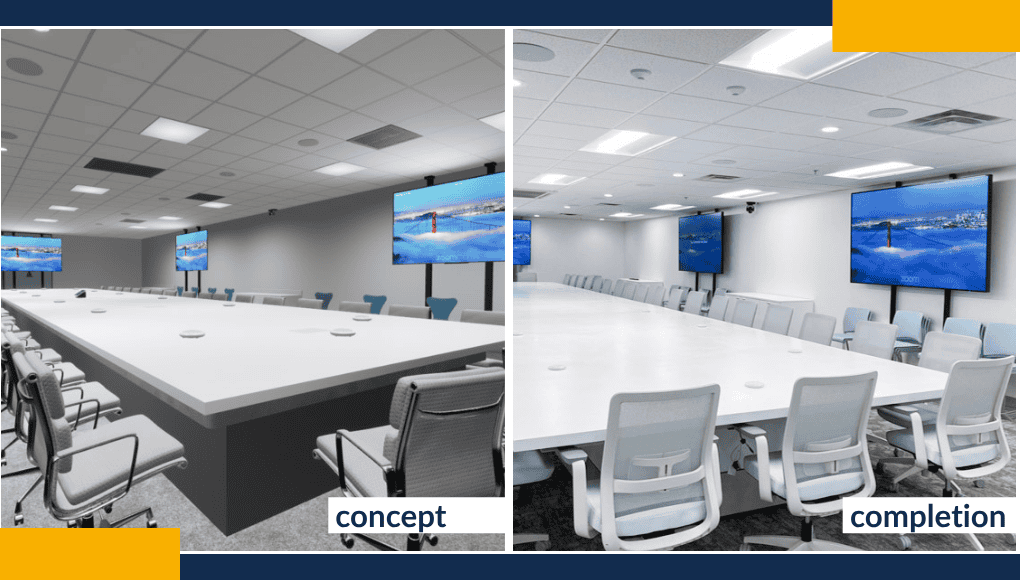It happens all the time: companies assume that adding more gear—another display, a few mics, maybe a wireless presentation tool—will magically fix their meeting room issues. But more tech isn’t the answer. A thoughtful AV strategy is.
At DGI, we’ve seen what happens when organizations skip the planning phase. The result? Rooms overloaded with equipment, inconsistent experiences, and frustrated users who still can’t collaborate effectively. That’s why we always start with strategy—before any “join meeting” button is pushed.
It Starts With Understanding the Space
You can’t design an effective AV system without knowing what the space is for. That means talking to stakeholders and end users—people who will actually be in the room—about how they work, what they share, and what they need to see and hear.
Is the room for presentations, hybrid collaboration, team huddles, or video playback? Will the screen be displaying slides, spreadsheets, dashboards, or rich media? That single question—what will be on the screen—can change everything.
Maybe you start with one display. Then a second gets added. Suddenly the people and content don’t display the way you thought they would. You wanted to see someone’s body language during a sales pitch and all your getting is a small image of them looking like they are on Hollywood Squares!
With VR, You Can Course-Correct in Seconds
Instead of waiting until construction to find out what doesn’t work, DGI uses immersive design tools to visualize the space with real content. Clients can walk through the room virtually, experience screen size, height, placement, and even see how audio may behave.
Want to swap out two 75″ displays for a single 86″? In VR, it’s a quick change. No delays. No change orders. No surprises. That flexibility saves time, money, and frustration—especially when you’re still in the design phase.
Simplicity = Scalability
A solid AV strategy leads to cleaner system design. Fewer moving parts. Less clutter. And easier rollout across multiple rooms or locations. When systems are intuitive and repeatable, they’re easier to support and easier for users to adopt.
Whether it’s a small huddle room or a global deployment, streamlined design is what lets organizations scale—confidently.
The Real Impact: Meetings That Work
So what’s the actual impact of a strong AV strategy?
Meeting success: Rooms are ready before the meeting starts. Users walk in with confidence that everything works. Instead of people wanting to return home to work you get a return on investment.
User confidence: No more guesswork. Whether you’re in Room A or Room Z, the experience is consistent—and easy to operate.
Employee morale: There’s nothing more demoralizing than a group of high-level execs sitting around waiting for a room to work. A strong strategy eliminates that friction.
And when things do go wrong, a smart system design allows IT to quickly redirect teams to an auxiliary space—or solve the issue remotely before anyone even notices.
Consistency Is Key
Great AV strategy isn’t just about uptime—it’s about predictability. When users can walk into any room and know exactly what to expect, it builds trust in the technology, reduces training needs, and keeps teams focused on the meeting—not the setup.
Final Thought: Strategy First, Gear Second
You can buy all the tech in the world. But without a strategy, it won’t solve the problems you’re trying to fix. At DGI, we help our clients align their goals with their space—designing AV systems that are scalable, supportable, and simple to use.
Because more tech isn’t the goal. Better communication is.
Want to see smart AV strategy in action?
Visit our Boston-area showroom and experience what works—before you build.

